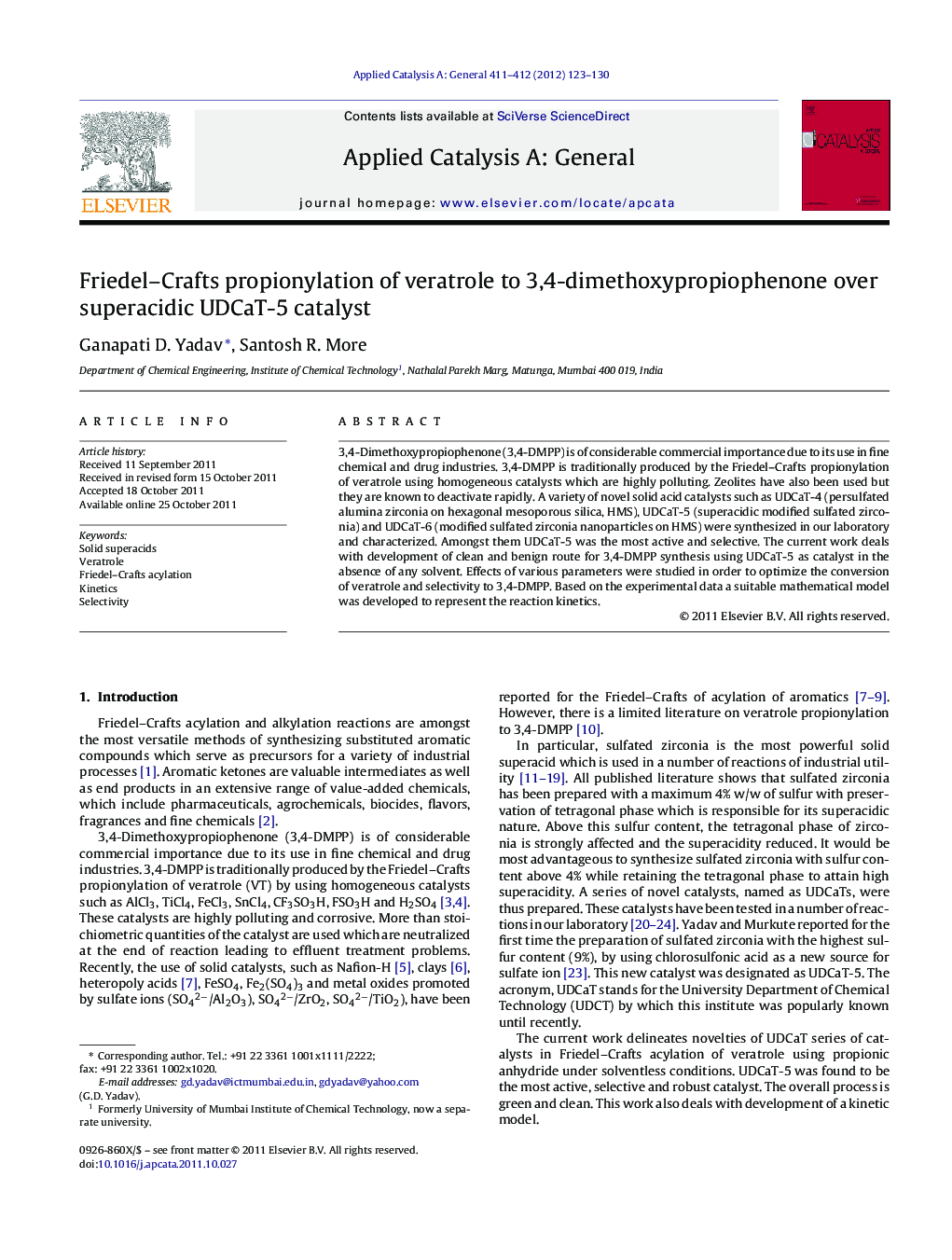| کد مقاله | کد نشریه | سال انتشار | مقاله انگلیسی | نسخه تمام متن |
|---|---|---|---|---|
| 41277 | 45883 | 2012 | 8 صفحه PDF | دانلود رایگان |

3,4-Dimethoxypropiophenone (3,4-DMPP) is of considerable commercial importance due to its use in fine chemical and drug industries. 3,4-DMPP is traditionally produced by the Friedel–Crafts propionylation of veratrole using homogeneous catalysts which are highly polluting. Zeolites have also been used but they are known to deactivate rapidly. A variety of novel solid acid catalysts such as UDCaT-4 (persulfated alumina zirconia on hexagonal mesoporous silica, HMS), UDCaT-5 (superacidic modified sulfated zirconia) and UDCaT-6 (modified sulfated zirconia nanoparticles on HMS) were synthesized in our laboratory and characterized. Amongst them UDCaT-5 was the most active and selective. The current work deals with development of clean and benign route for 3,4-DMPP synthesis using UDCaT-5 as catalyst in the absence of any solvent. Effects of various parameters were studied in order to optimize the conversion of veratrole and selectivity to 3,4-DMPP. Based on the experimental data a suitable mathematical model was developed to represent the reaction kinetics.
Figure optionsDownload high-quality image (90 K)Download as PowerPoint slideHighlights
► Green propionylation of veratrole to 3,4-dimethoxypropiophenone.
► Different sulfate modified zirconia based catalysts.
► UDCaT-5 as the most active mesoporous solid acid catalyst
► 100% selective and reusable catalyst.
► Eley–Rideal mechanism.
Journal: Applied Catalysis A: General - Volumes 411–412, 16 January 2012, Pages 123–130